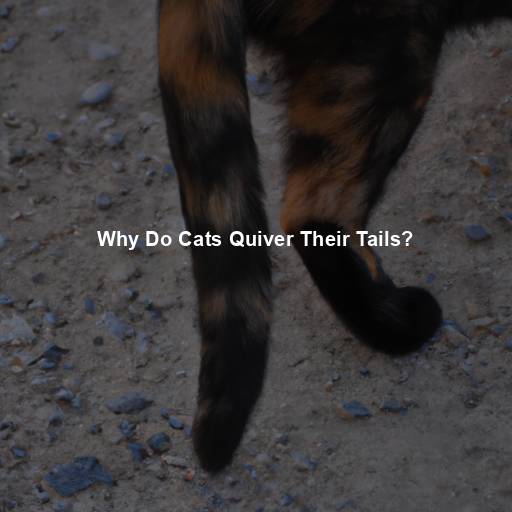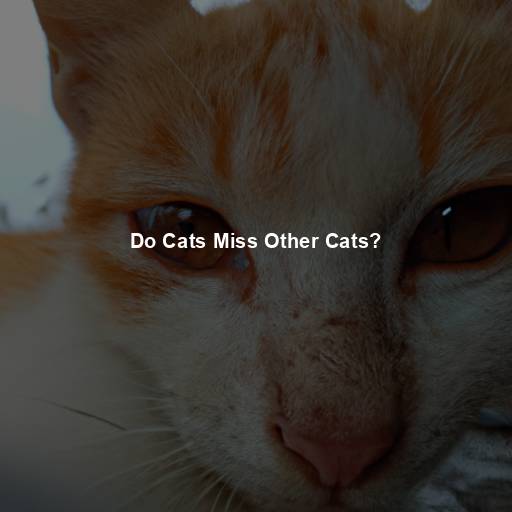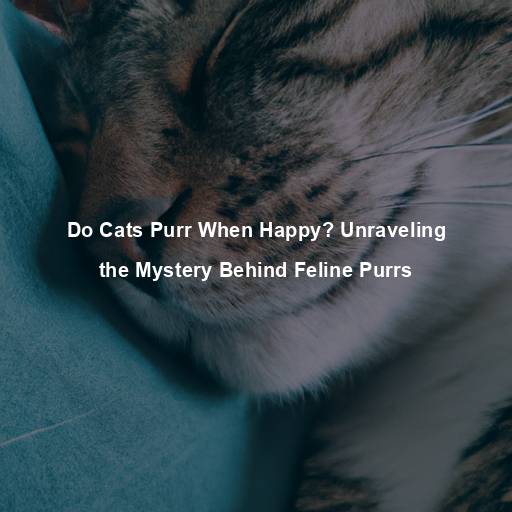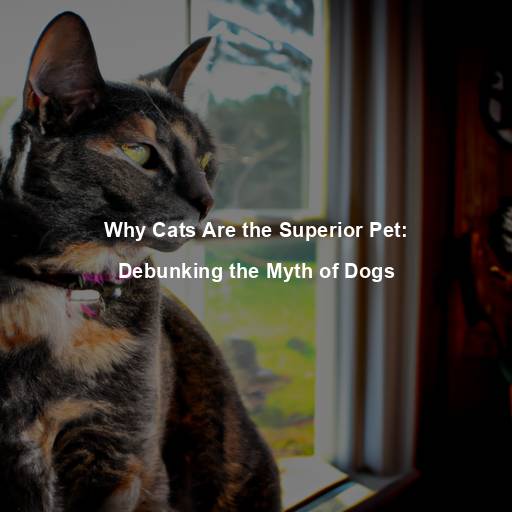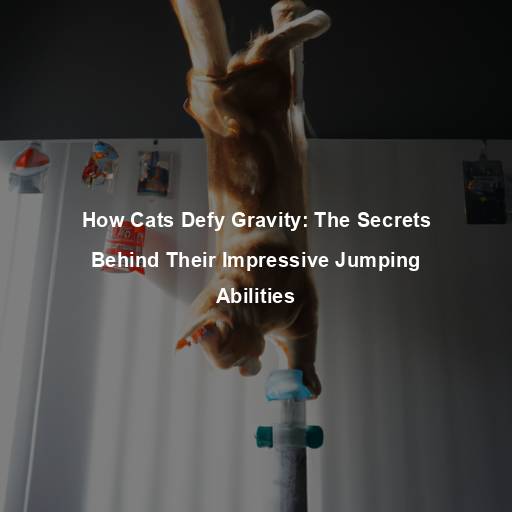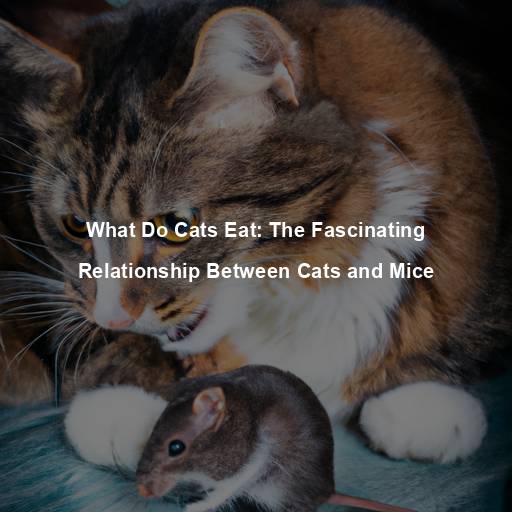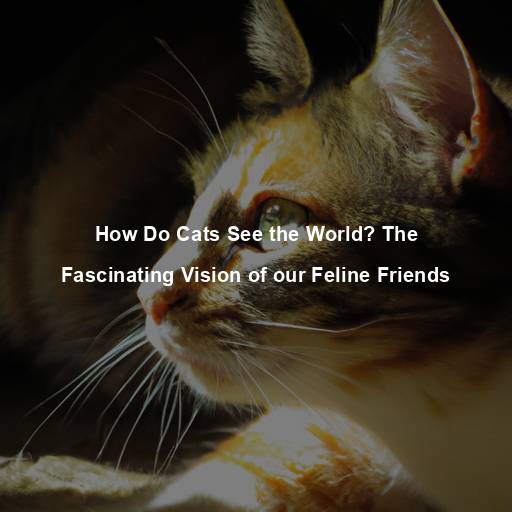Why Do Cats Quiver Their Tails?
Last Updated on November 12, 2023 by Evan
Contents [hide]
- 1 Understanding the Intriguing Behavior of Feline Tails
- 1.1 Unveiling the Tail’s Role in Feline Communication
- 1.2 Expressing Contentment and Relaxation
- 1.3 Signaling Playfulness and Excitement
- 1.4 Indicating Frustration or Agitation
- 1.5 Communicating Fear or Anxiety
- 1.6 The Influence of Tail Physiology on Quivering
- 1.7 Thermoregulation and Blood Circulation
- 1.8 Muscle Fatigue and Tremors
- 1.9 Neurological Factors
- 1.10 Tail Positions and their Meanings
- 1.11 Tail Communication with Humans
- 1.12 Tailless Breeds: The Unique Communicators
- 1.13 Tail Quivering in Kittens: Innocence in Motion
- 2 FAQs: Why do cats quiver their tails?
- 2.1 What does it mean when a cat’s tail quivers?
- 2.2 Are there different types of tail quivering in cats?
- 2.3 Can tail quivering be a sign of pain or discomfort?
- 2.4 How can I tell if my cat’s tail quivering is a positive or negative signal?
- 2.5 Are there any other reasons why a cat’s tail might quiver?
Understanding the Intriguing Behavior of Feline Tails
Cats have long captivated the hearts and minds of humans with their enigmatic behavior. One such behavior that often leaves us puzzled is the quivering of their tails. It’s a sight that can evoke curiosity and wonder, prompting us to question the motives behind this fascinating feline movement. In this article, we will delve into the reasons why cats quiver their tails, exploring the various factors that influence this behavior and shedding light on the underlying meanings behind it.
Unveiling the Tail’s Role in Feline Communication
To comprehend why cats quiver their tails, we must first understand the vital role their tails play in communication. Cats, being highly expressive creatures, employ their tails as a means of conveying their emotions and intentions. Tail movements are a crucial aspect of their body language, enabling them to communicate with humans and fellow felines alike.
Expressing Contentment and Relaxation
When a cat quivers its tail, particularly in a gentle and relaxed manner, it often signifies contentment and relaxation. This phenomenon is commonly observed when a cat is in a peaceful and serene state, such as when it is lounging comfortably or being gently stroked by its human companion. The rhythmic quivering of the tail in such instances can be seen as an outward manifestation of the cat’s inner tranquility.
Signaling Playfulness and Excitement
Another reason why cats quiver their tails is to express playfulness and excitement. In situations where a cat is engaged in a lively game or eagerly anticipating an activity, its tail may tremble with anticipation. This quivering motion, accompanied by heightened feline energy, serves as a visual cue that the cat is ready to indulge in interactive play or exploration.
Indicating Frustration or Agitation
When a feline’s tail begins to quiver, it’s like a flickering Morse code of mixed emotions. While it may initially seem like a signal of joy or excitement, it could also be a perplexing indicator of frustration or irritation. The rapid and tense quivering might stem from a variety of uncomfortable situations, be it an unwelcome circumstance, the presence of another creature, or feeling uneasy around a certain person. The intricate language of a cat’s tail can leave us both intrigued and puzzled by the complexity of their feelings.
Communicating Fear or Anxiety
Have you ever noticed the perplexing behavior of a cat when it quivers its tail? It’s like a burst of uncertainty and anxiety washing over them. In moments of fear or when faced with a daunting situation, a cat’s tail may involuntarily tremble, revealing their heightened state of alertness. It’s their way of sending a cryptic message to any potential threats, while also showcasing their unease in an unfamiliar environment.
The Influence of Tail Physiology on Quivering
Beyond emotional communication, the physiology of a cat’s tail also contributes to its quivering behavior. The tail is composed of numerous small muscles, tendons, and nerves, which collectively allow for a wide range of movements. These intricate structures enable cats to maneuver their tails in various ways, including the distinctive quivering motion.
Thermoregulation and Blood Circulation
One possible reason for tail quivering is thermoregulation. Cats possess a unique ability to regulate their body temperature, and the tail plays a role in this process. By quivering their tails, cats can increase blood circulation, helping to distribute warmth throughout their bodies. This behavior is particularly common in colder environments or when a cat is trying to warm up after a period of rest.
Muscle Fatigue and Tremors
Just like any other muscle in the body, the muscles in a cat’s tail can experience fatigue or tremors. Prolonged physical activity or intense play sessions can lead to temporary muscle exhaustion, resulting in the quivering of the tail. These tremors are usually short-lived and subside once the muscles have had an opportunity to rest and recover.
Neurological Factors
In some cases, the quivering of a cat’s tail may be attributed to neurological factors. Certain neurological conditions or abnormalities can manifest in the form of involuntary movements, including tail quivering. If you notice persistent or abnormal quivering in your cat’s tail, it is essential to consult a veterinarian to rule out any underlying health issues that may require attention.
Tail Positions and their Meanings
In addition to quivering, the position of a cat’s tail can also provide valuable insights into their emotional state. Understanding these tail positions can further deepen our understanding of feline behavior and communication. Let’s explore some common tail positions and their associated meanings:
Upright Tail
An upright tail, held high and straight, is often a sign of confidence and a friendly demeanor. Cats with their tails positioned in this manner are generally approachable and open to interaction. It’s their way of saying, “I’m feeling good and ready for some socializing”!
Curved Tail
Have you ever noticed how a cat’s tail has this mesmerizing gentle curve? Well, that little twist actually tells a lot about their mood! It’s like a secret language, revealing that the furry friend is in a state of pure contentment and relaxation. You can even think of it as their personal invitation, extending their paw to welcome companionship and embrace a sense of calm and coziness.
Puffed-up Tail
A puffed-up tail, resembling a bottle brush, is a clear indication of a cat feeling threatened or frightened. This defensive posture suggests that the cat is trying to appear larger and more intimidating to potential adversaries. It’s a signal to others to keep their distance and not to provoke any further.
Tucked Tail
The way a cat holds its tail can speak volumes about its emotions and state of mind. A telltale sign of fear or submission is when a cat tucks its tail tightly against its body, as if trying to shield itself from the world. This instinctive reaction is commonly seen when a cat feels threatened by a more dominant figure or finds itself in a tense and unsettling environment. These subtle cues offer a glimpse into the complex and mysterious world of our feline companions.
Twitching Tail
When it comes to feline communication, our furry friends have more than just a single sign to signal their emotions. In addition to the classic quivering, keep an eye out for those stealthy tail twitches. These quick movements could be a clear indication that your cat is on high alert, laser-focused on something that has piqued their interest. While it’s not an exact science, these twitches could reveal a mix of anticipation, exhilaration, or perhaps even a touch of annoyance.
Tail Communication with Humans
Cats, those enigmatic creatures that have bewildered humans since ancient times, possess a tail-tuned language that transcends mere feline-to-feline communication. Yes, dear readers, these mesmerizing beings have cunningly tailored their expressive tail movements to engage with us humans, effectively weaving a bond between our two species. Prepare to descend into the depths of the mysterious realm of cats and unravel the rich tapestry of tail behaviors they employ when interacting with their beloved human companions.
Tail Wrapping
When a cat wraps its tail around a person’s leg or arm, it is often a sign of affection and trust. This gentle gesture is the feline equivalent of a hug, showcasing a strong bond between human and cat. It’s a heartwarming display of love and a way for cats to seek comfort and reassurance from their beloved humans.
Tail Flicking
Watching a cat elegantly swishing its tail back and forth is a captivating sight, but what does it truly signify? The enigmatic truth is that tail flicking is an intricate language of its own, riddled with intricate meanings that perplex even the most astute feline enthusiasts. While it may indicate uncontainable delight and exhilaration during the thrill of playtime, in a twisted turn of events, it could also convey an underlying tone of irritation or sheer impatience. Understanding this cryptic communication requires one to embark on a puzzling journey, delicately analyzing the overall body language and scrutinizing every minute facial expression that accompanies this bewitching tail spectacle.
Slow Tail Wagging
The mesmerizing sway of a feline’s tail, akin to the rhythmic wag of a dog’s tail, unveils a delightful secret. In this furtive language of expression, a serene and blissful disposition emerges. Moments of relaxation and pure contentment permeate the atmosphere, as our feline companions revel in the sheer pleasure of their surroundings. Behold, a captivating spectacle, revealing an intricate tapestry of emotional fulfillment and profound satisfaction.
Tailless Breeds: The Unique Communicators
In the realm of feline diversity, there exists a captivating subset of tailless wonders that defy conventional expectations. These enchanting breeds, like the Manx, Bobtail, and Cymric, have embarked on a perplexing evolutionary journey that has given rise to extraordinary modes of communication, devoid of the tail’s traditional sway. Through a symphony of vocalizations, subtle body postures, and captivating facial expressions, these enigmatic felines have unlocked an entirely unique lexicon to convey their emotions and intentions, leaving us in awe of their innate capabilities.
Tail Quivering in Kittens: Innocence in Motion
In addition to adult cats, kittens also exhibit tail quivering. However, in the case of kittens, tail quivering is often a result of their developing motor skills. As young cats explore their surroundings and learn to control their bodies, they may experience small quivers in their tails due to the coordination of their muscles and nerves. This quivering is usually temporary and diminishes as the kittens grow older and gain better control over their movements.
FAQs: Why do cats quiver their tails?
What does it mean when a cat’s tail quivers?
Cats, mysterious creatures of endless enigma, wield their tales as cryptic messengers of their hidden realms. In the realm of quivering tails, a grand tapestry of emotions and intentions unfolds. Sometimes, a quiver dances upon the feline’s tail as an expression of sheer delight and euphoria, akin to a jubilant canine wagging its tail. Yet, let us not overlook the darker shades of this ethereal dance; an agitated quiver may whisper tales of vexation, irritation, or trepidation, especially when the rest of the exquisite feline form tenses or bristles with aggression. And, lo and behold, the tail’s quiver may also manifest as an intricate response to anticipation or an artist’s brushstroke, unfurling to expel the excess energy that courses through the mysterious vessel of a cat’s being.
Are there different types of tail quivering in cats?
Cats, oh, the enigmatic creatures! Their tails hold within them a universe of unspoken emotions and mysteries. Witness the phenomenon of tail quivering – a captivating dance of feline expression. One form of this bewitching display is a swift and delicate tremor, as if the tail itself were whispering secrets. It occurs in moments of sheer excitement or unwavering focus, when a cat’s prey drive takes hold. Yet, dear reader, be prepared for the more dramatic and arresting version of this spectacle – a pronounced quivering, accompanied by an arched back and fur standing on end. In this instance, tread lightly, for it is a sign of deep fear or aggression. Approach with caution, offer the feline space, and take heed not to awaken its volatile essence further.
Can tail quivering be a sign of pain or discomfort?
Yes, tail quivering can also be an indication of pain or discomfort in cats. If a cat’s tail is quivering accompanied by other signs like dilated pupils, restlessness, hiding, loss of appetite, or unusual vocalization, it might be experiencing distress or physical pain. In such cases, it is crucial to consult a veterinarian to determine the underlying cause and provide appropriate medical care.
How can I tell if my cat’s tail quivering is a positive or negative signal?
Decoding the enigmatic language of a cat’s tail can be a head-scratching puzzle. Context holds the key, as well as the intricate dance of body language that accompanies it. When a cat’s body exudes relaxation, ears alertly forward, and the tail engages in a delicate, unhurried quiver, it’s a probable indication of feline contentment and joy. However, a convoluted twist enters the picture when the cat’s body tenses, fur standing on end like a prickly puzzle, dilated pupils betraying heightened emotions while the tail quivers with rapid intensity or a hint of aggression. These perplexing signals may hint at underlying feelings of fear, aggression, or discomfort, illuminating the cryptic depths of feline communication.
Are there any other reasons why a cat’s tail might quiver?
There is an intriguing phenomenon called “tail vibration syndrome” that can cause a cat’s tail to quiver, especially in young kittens. This harmless condition is believed to be connected to the development of nerve function and can occur even when the cat is at rest. However, it’s important to note that persistent or unusual tail quivering might be a sign of underlying medical issues, such as neurological disorders. In such cases, it is advisable to seek the guidance of a veterinarian for a comprehensive examination.

